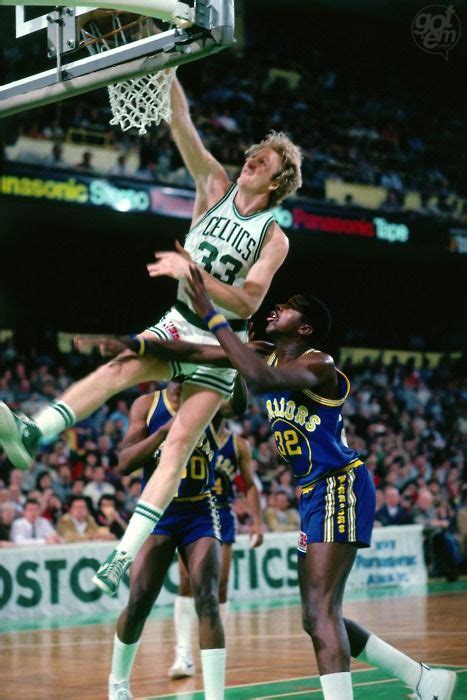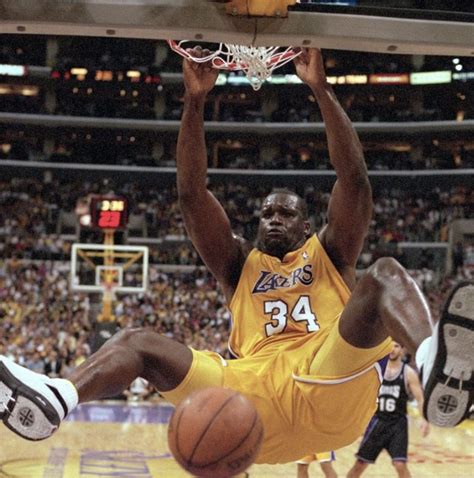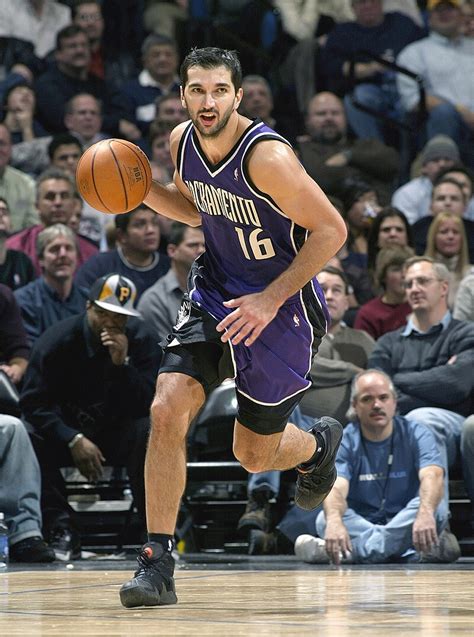
Larry Bird believes the dunk versus three-pointer debate isn’t a simple equation, stating both have their place and impact in basketball, depending on the situation and the player.
BOSTON – The long-standing debate over whether a dunk or a three-pointer is more valuable in basketball has finally received input from one of the sport’s most respected figures: Larry Bird. Known for his exceptional all-around game, Bird weighed in on the argument, asserting that the answer isn’t as straightforward as many might think. He argues that both dunks and three-pointers have their unique advantages and strategic roles within the game.
Bird’s nuanced perspective acknowledges the excitement and momentum a dunk can generate, while also recognizing the mathematical advantage of a successful three-point shot. “It’s complicated!” Bird stated, encapsulating the complexity of the debate.
According to Bird, the optimal choice between a dunk and a three-pointer largely depends on the game situation, the player’s strengths, and the overall team strategy. A timely dunk can energize a team and shift the game’s momentum, whereas a well-executed three-pointer can quickly change the scoreboard dynamics.
The debate surrounding dunks versus three-pointers has intensified in recent years due to the increasing emphasis on three-point shooting in modern basketball. While some purists still appreciate the physicality and highlight-reel potential of dunks, the analytical revolution has highlighted the efficiency of the three-point shot, leading many to believe that it is the more valuable offensive weapon.
Bird’s perspective provides a balanced viewpoint, emphasizing that both dunks and three-pointers contribute to the game in distinct ways. His comments are likely to resonate with basketball fans who appreciate the multifaceted nature of the sport and recognize that there is no one-size-fits-all answer to the dunk versus three-pointer debate.
The Dunk’s Impact: Momentum and Intimidation
A significant aspect of Larry Bird’s analysis revolves around the intangible impact of a dunk. Unlike a three-pointer, a dunk can electrify the crowd, demoralize opponents, and inject a surge of energy into the team. These factors, though difficult to quantify, play a critical role in the ebb and flow of a basketball game.
“Sometimes, you need that dunk to get the crowd going, to get the team fired up,” Bird explained. “It’s more than just two points; it’s about the emotional lift it gives you.”
The psychological effect of a powerful dunk can be particularly pronounced in crucial moments, such as late in a close game or during a playoff series. A timely dunk can shift the momentum, putting pressure on the opposing team and instilling confidence in the dunker’s teammates.
Furthermore, dunks often serve as a form of intimidation, especially when executed over a defender. The visual of a player being posterized can have a lasting impact, making opponents hesitant to challenge the dunker in the future.
However, the reliance solely on dunks can also be limiting. Defenses can adjust to prevent easy access to the basket, forcing players to rely on other offensive options. Therefore, while the dunk provides a unique set of advantages, it cannot be the sole focus of a team’s offensive strategy.
The Three-Pointer’s Efficiency: A Numbers Game
In contrast to the dunk’s emotional and psychological impact, the three-pointer’s value is primarily rooted in its mathematical efficiency. A successful three-point shot yields one more point than a dunk or a standard jump shot, making it a highly efficient way to score if executed consistently.
“The math is simple,” Bird acknowledged. “If you can consistently hit threes, you’re going to be tough to beat.”
The rise of analytics in basketball has further emphasized the importance of the three-pointer. Teams are now more focused than ever on maximizing their offensive efficiency, and that often means prioritizing three-point attempts. Coaches design offensive systems that create open looks for their shooters, and players are increasingly developing their three-point range.
However, the reliance on three-pointers also has its drawbacks. Over-reliance on long-range shots can lead to stagnant offense, limited interior scoring, and a lack of rebounding opportunities. Furthermore, three-point shooting is inherently variable; even the best shooters go through cold streaks, which can derail a team’s offense.
Therefore, while the three-pointer offers a clear mathematical advantage, it is not a guaranteed path to success. Teams must find a balance between three-point shooting and other offensive strategies to maximize their overall efficiency.
Situational Awareness: When to Dunk, When to Shoot
Larry Bird’s perspective highlights the importance of situational awareness in the dunk versus three-pointer debate. There is no universal answer; the optimal choice depends on the specific circumstances of the game.
In transition, when a player has a clear path to the basket, a dunk is often the best option. It provides a high-percentage shot, energizes the team, and puts pressure on the defense. Similarly, late in the game, when a team needs a quick score to shift momentum, a dunk can be a valuable weapon.
However, in a half-court setting, when the defense is set, a three-pointer may be the more prudent choice. If a player has an open look from beyond the arc, taking the three-pointer is often the most efficient way to score. Furthermore, if the team is struggling to score inside, spreading the floor and creating opportunities for three-pointers can open up driving lanes and create more scoring opportunities.
Ultimately, the decision of whether to dunk or shoot a three-pointer rests with the player. They must assess the situation, consider their strengths, and make the best decision for the team.
The Modern Game: Evolution and Adaptation
The modern NBA has witnessed a significant shift towards three-point shooting. Teams are attempting more three-pointers than ever before, and players are increasingly developing their range. This evolution has led some to question whether the dunk is becoming obsolete.
However, Larry Bird’s comments suggest that the dunk still has a place in the modern game. While three-pointers are undoubtedly valuable, they cannot completely replace the emotional and psychological impact of a timely dunk.
Furthermore, the rise of three-point shooting has actually created new opportunities for dunks. As defenses focus on containing three-point shooters, driving lanes often open up, creating chances for players to attack the basket and execute highlight-reel dunks.
Therefore, the dunk is not becoming obsolete; it is simply evolving. Players are finding new ways to incorporate dunks into their game, and coaches are designing offensive systems that utilize the dunk’s unique advantages.
Beyond Points: The Intangibles of Basketball
The dunk versus three-pointer debate often focuses solely on points scored. However, basketball is more than just a numbers game; it also involves intangibles such as momentum, energy, and intimidation.
A dunk can provide a team with a surge of energy, lifting their spirits and inspiring them to play harder. It can also demoralize opponents, making them hesitant to challenge the dunker in the future. These intangible factors can have a significant impact on the outcome of a game, even if they are not reflected in the box score.
Similarly, a well-timed three-pointer can shift the momentum of a game, putting pressure on the opposing team and instilling confidence in the shooter’s teammates. The ability to make clutch three-pointers is a valuable asset, especially in close games.
Ultimately, the value of a dunk or a three-pointer depends on the specific context of the game. Both have their unique advantages and can contribute to a team’s success in different ways.
Larry Bird’s Legacy: A Master of All Aspects
Larry Bird’s perspective on the dunk versus three-pointer debate is particularly insightful given his own illustrious career. Bird was a master of all aspects of the game, excelling at shooting, passing, rebounding, and defense. He was also known for his exceptional basketball IQ and his ability to make clutch plays in pressure situations.
Bird’s versatility allowed him to adapt to any situation and make the best decision for his team. He was equally comfortable taking a contested three-pointer or driving to the basket for a dunk. His ability to excel in all areas of the game made him one of the greatest players of all time.
Bird’s comments on the dunk versus three-pointer debate reflect his holistic understanding of basketball. He recognizes that both dunks and three-pointers have their place in the game and that the optimal choice depends on the specific circumstances. His perspective provides a valuable reminder that basketball is more than just a numbers game; it also involves intangibles such as momentum, energy, and intimidation.
The Future of the Debate: A Continuing Evolution
The dunk versus three-pointer debate is likely to continue as long as basketball is played. As the game evolves, new strategies and techniques will emerge, and the value of dunks and three-pointers will continue to be debated.
However, Larry Bird’s perspective provides a valuable framework for understanding the debate. He reminds us that both dunks and three-pointers have their unique advantages and that the optimal choice depends on the specific circumstances. His comments encourage us to appreciate the multifaceted nature of basketball and to recognize that there is no one-size-fits-all answer to the dunk versus three-pointer debate.
The debate isn’t just about scoring points, but about the broader strategic and psychological elements that contribute to winning basketball. Bird’s insight underscores the importance of a balanced offensive approach, where both the power of the dunk and the precision of the three-pointer are utilized effectively. As the game continues to evolve, the discussion will undoubtedly continue, with coaches and players constantly seeking the most effective strategies to maximize their chances of success. This ongoing dialogue highlights the dynamic and ever-changing nature of basketball.
FAQ Section
1. What is Larry Bird’s main point in the dunk vs. 3-pointer debate?
Larry Bird believes that the dunk versus three-pointer debate is not a simple one, as both have their own advantages and strategic roles. He emphasizes that the optimal choice depends on the specific game situation, the player’s strengths, and the overall team strategy. A dunk can energize the team and shift momentum, while a three-pointer can quickly change the scoreboard dynamics with its mathematical advantage. It’s a complicated decision that requires situational awareness.
2. According to the article, what are the intangible benefits of a dunk?
The article highlights that a dunk can electrify the crowd, demoralize opponents, and inject a surge of energy into the team. These psychological effects, though hard to quantify, can shift momentum, put pressure on the opposing team, and instill confidence in the dunker’s teammates. A well-executed dunk can also serve as a form of intimidation, making opponents hesitant to challenge the dunker in the future.
3. What is the primary advantage of a three-pointer according to the article?
The primary advantage of a three-pointer, as mentioned in the article, is its mathematical efficiency. A successful three-point shot yields one more point than a dunk or a standard jump shot, making it a highly efficient way to score if executed consistently. The rise of analytics in basketball has further emphasized the importance of the three-pointer, with teams focusing on maximizing their offensive efficiency by prioritizing three-point attempts.
4. How does the article suggest teams should balance dunks and three-pointers in their offensive strategy?
The article suggests that teams should find a balance between three-point shooting and other offensive strategies to maximize their overall efficiency. Over-reliance on three-pointers can lead to stagnant offense, limited interior scoring, and a lack of rebounding opportunities. Therefore, teams need to incorporate dunks when a player has a clear path to the basket, especially during transitions or when needing to shift momentum. The decision to dunk or shoot a three-pointer should be based on situational awareness and the player’s strengths.
5. How has the rise of three-point shooting affected the role of dunks in the modern NBA, according to the article?
The article argues that the rise of three-point shooting hasn’t made dunks obsolete but has instead created new opportunities for them. As defenses focus on containing three-point shooters, driving lanes often open up, creating chances for players to attack the basket and execute dunks. The dunk is evolving, with players finding new ways to incorporate it into their game, and coaches designing offensive systems that utilize its unique advantages. Expanded Analysis of Larry Bird’s Perspective
Larry Bird’s insights into the “dunk versus three-pointer” debate are invaluable not just because of his legendary status in the sport, but also because they reflect a deep understanding of the game’s multifaceted nature. His perspective goes beyond the simple mathematical calculation of points scored and delves into the nuances of momentum, psychology, and situational awareness that are crucial for success in basketball.
The Context of Bird’s Era vs. the Modern Game:
To fully appreciate Bird’s views, it’s essential to consider the context of his playing era compared to the modern game. During Bird’s time with the Boston Celtics in the 1980s, the three-point shot was a relatively new addition to the NBA. While it was a part of the game, it wasn’t the dominant offensive weapon it has become today. The emphasis was more on inside-out basketball, with a focus on post play, mid-range jumpers, and driving to the basket. Bird himself was a master of this style, possessing exceptional passing skills, court vision, and a deadly mid-range game, in addition to being a capable three-point shooter.
In contrast, the modern NBA is characterized by a heavy reliance on three-point shooting, driven by analytics and the desire to maximize offensive efficiency. Teams like the Golden State Warriors and the Houston Rockets have popularized the “live by the three, die by the three” approach, demonstrating the potential of a three-point-centric offense. This shift has led to questions about the relative value of other offensive options, including dunks.
Bird’s perspective bridges these two eras, acknowledging the importance of the three-pointer in today’s game while also emphasizing the enduring value of the dunk. He recognizes that the optimal offensive strategy involves a balance between both, tailored to the specific strengths of the team and the circumstances of the game.
The Psychological Warfare of the Dunk:
One of the key aspects of Bird’s analysis is the emphasis on the psychological impact of the dunk. In a game that is as much mental as it is physical, the ability to influence the opponent’s mindset can be a decisive advantage. A thunderous dunk can serve as a form of psychological warfare, intimidating defenders, demoralizing the opposing team, and energizing the home crowd.
The visual impact of a dunk cannot be understated. A highlight-reel dunk can instantly change the momentum of a game, injecting a surge of adrenaline into the dunker’s teammates and silencing the opposing fans. The image of a player being posterized can linger in the minds of opponents, making them more hesitant to challenge the dunker in the future.
In contrast, a three-pointer, while mathematically efficient, lacks the same visceral impact. It’s a more subtle form of scoring, and while it can certainly shift momentum, it doesn’t have the same immediate psychological effect as a dunk.
The Strategic Value of the Dunk:
Beyond its psychological impact, the dunk also has strategic value in certain situations. In transition, when a player has a clear path to the basket, a dunk is often the most efficient and effective way to score. It’s a high-percentage shot that puts immediate pressure on the defense.
Late in close games, a dunk can also be a valuable weapon. When time is running out and every possession matters, a quick, decisive dunk can provide a much-needed boost and shift the momentum in favor of the dunking team.
Furthermore, the threat of a dunk can open up other offensive opportunities. When defenders are constantly worried about being beaten off the dribble and posterized, they may be more likely to give shooters open looks from beyond the arc. This creates a symbiotic relationship between dunks and three-pointers, where the threat of one makes the other more effective.
The Limitations of the Three-Point Obsession:
While acknowledging the importance of the three-pointer, Bird’s perspective also implicitly cautions against an over-reliance on long-range shooting. He understands that basketball is a game of balance, and that a team that becomes too predictable on offense is easier to defend.
A team that focuses solely on three-point shooting may struggle to score in the paint, making them vulnerable to physical defenses. They may also have difficulty rebounding, as long-range shots often result in longer rebounds that are harder to secure.
Furthermore, three-point shooting is inherently variable. Even the best shooters go through cold streaks, and if a team’s entire offense is predicated on hitting three-pointers, they may be in trouble when those shots aren’t falling.
The Importance of Versatility and Adaptability:
Ultimately, Bird’s perspective underscores the importance of versatility and adaptability in basketball. The best teams are not one-dimensional; they can score in a variety of ways, adjust to different defensive schemes, and adapt to the flow of the game.
A team that can consistently score both inside and outside is much harder to defend than a team that relies solely on one offensive approach. This requires players who are skilled in multiple areas, capable of both driving to the basket for a dunk and knocking down open three-pointers.
It also requires a coaching staff that is willing to adapt their strategy based on the strengths of their players and the tendencies of their opponents. A successful coach will not force their team to conform to a rigid system; they will instead tailor the system to fit the players they have.
The Enduring Appeal of the Dunk:
Despite the rise of three-point shooting, the dunk continues to hold a special place in the hearts of basketball fans. There’s something inherently exciting about seeing a player rise above the rim and throw down a powerful dunk. It’s a display of athleticism, strength, and artistry that transcends the simple act of scoring two points.
Dunks are highlight-reel plays that generate buzz on social media and create lasting memories. They are a reminder of the raw athleticism and excitement that make basketball such a compelling sport.
While the three-pointer may be the more efficient way to score, the dunk will always be a part of the soul of basketball. It’s a symbol of power, athleticism, and the joy of the game.
The Modern Example:
Consider a player like LeBron James. While he is an exceptional three-point shooter, his game is defined by his ability to drive to the basket, absorb contact, and finish with powerful dunks. These dunks not only generate points but also demoralize opponents and energize his team. James’s ability to seamlessly transition between three-point shots and rim-rattling dunks makes him an incredibly difficult player to defend.
Similarly, a player like Zion Williamson, known for his incredible athleticism and dunking prowess, exemplifies the enduring appeal of the dunk in the modern game. His highlight-reel dunks captivate audiences and provide a spark for his team, even as three-point shooting continues to dominate the league.
Conclusion:
Larry Bird’s perspective on the “dunk versus three-pointer” debate is a valuable reminder that basketball is a complex game that involves more than just scoring points. Both dunks and three-pointers have their unique advantages and strategic roles, and the optimal offensive strategy involves a balance between both.
The dunk provides a psychological and emotional impact that the three-pointer cannot match, while the three-pointer offers a mathematical efficiency that is hard to ignore. A team that can consistently score both inside and outside is much harder to defend than a team that relies solely on one offensive approach.
Ultimately, the dunk versus three-pointer debate is a testament to the dynamic and ever-changing nature of basketball. As the game continues to evolve, new strategies and techniques will emerge, and the value of dunks and three-pointers will continue to be debated. However, the principles of balance, versatility, and adaptability will remain constant, guiding teams towards success.









